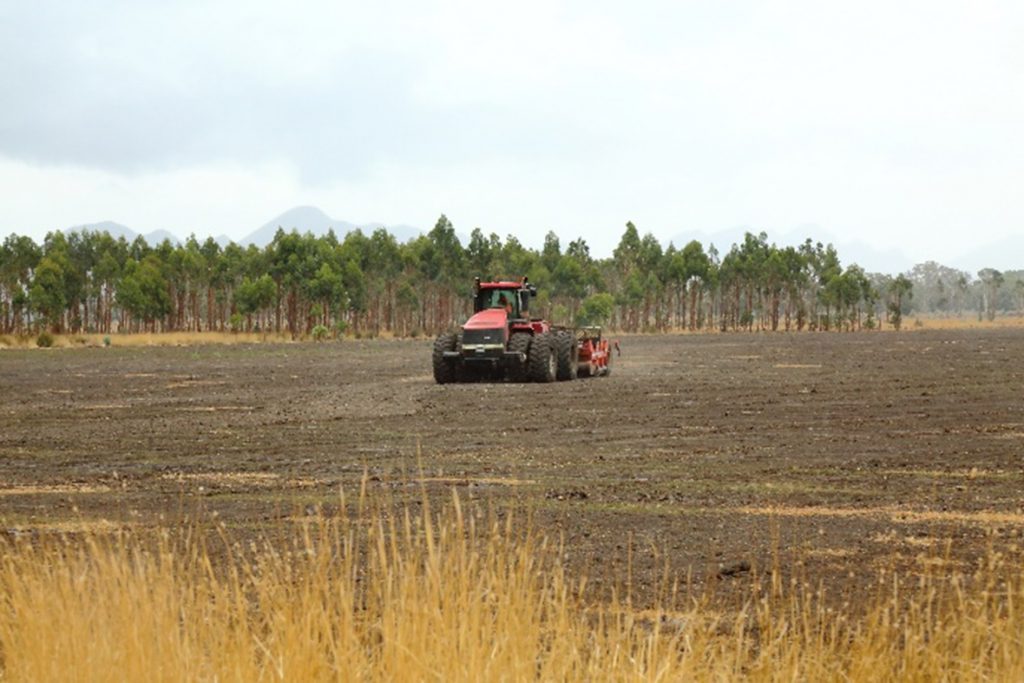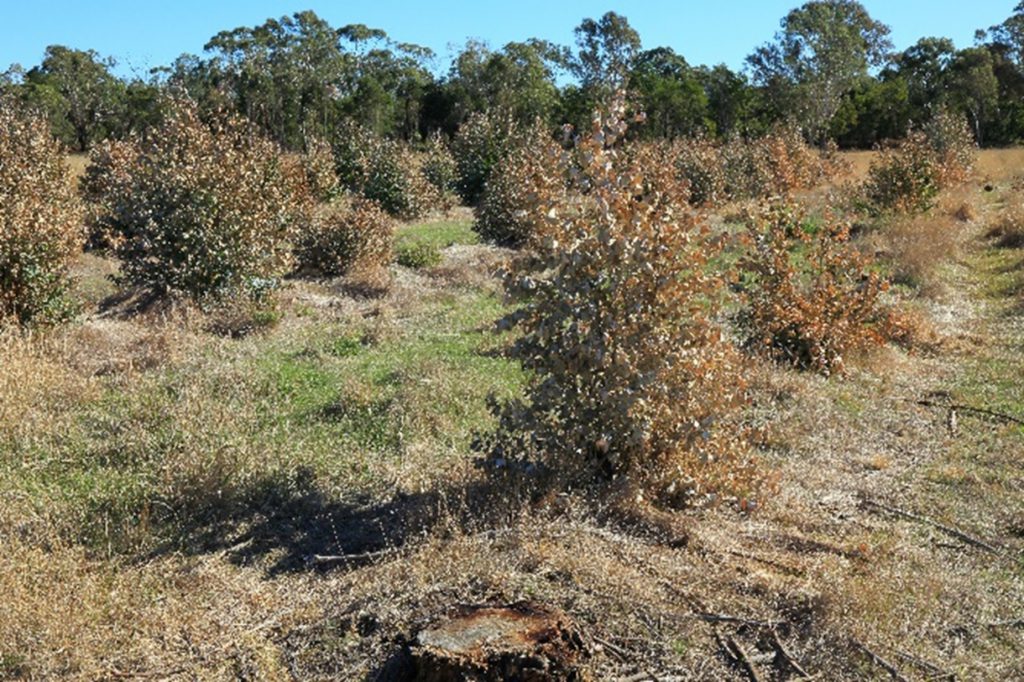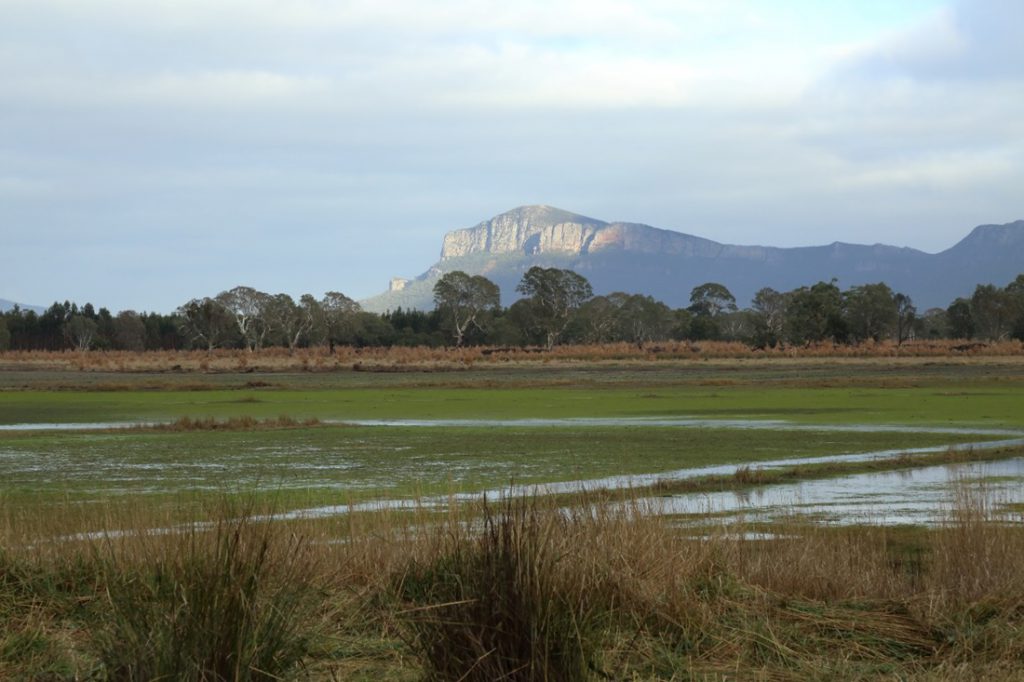What to do when you can’t see the Wetland for the Trees? Part 2 of Greg Kerr’s works update at Walker Swamp.
‘Why would you try and grow Blue Gums in a wetland?’ is a question often asked by visitors to Walker Swamp.
During its boom-time in the middle of last decade, which also corresponded with a period of prolonged drought, the hardwood forestry industry expanded into some areas that – with the benefit of hindsight – it is now clear were marginal, at best, for Blue Gums. The consequences of this attempt however are now apparent for all to see. The mounds and furrows left in the heavy soils of the wetland bed at Walker Swamp, where the Blue Gum plantings failed, are still evident all these years later – as shown below.
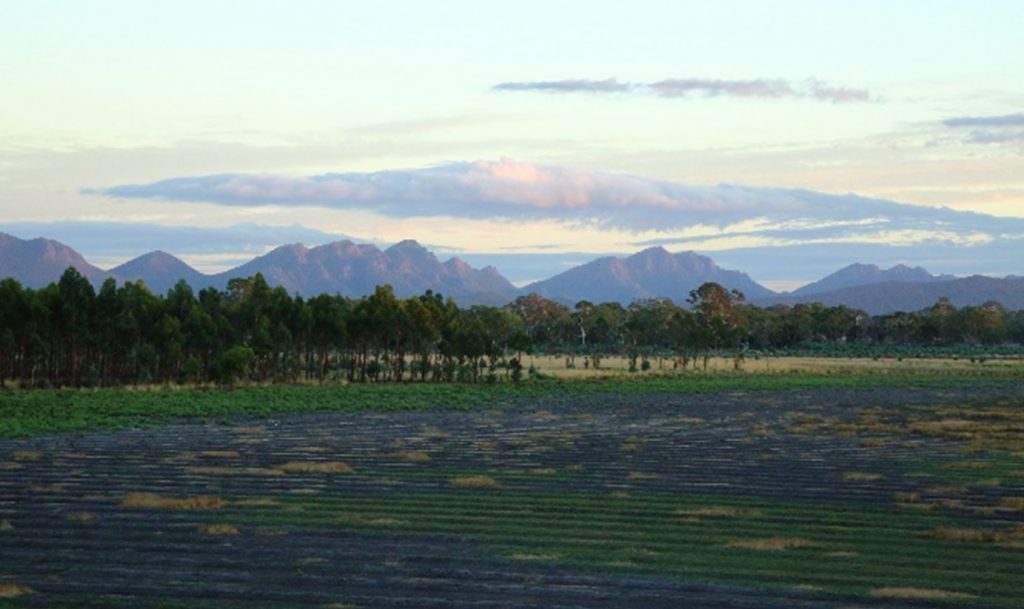
The bed of Walker Swamp in autumn 2018, showing the mounds left behind from the attempted establishment of Blue Gums. Photo by Greg Kerr.
Covered in weeds, the mounds extend into the swamp bed, preventing the natural zonation of native vegetation (radiating out from deeper to shallower areas) normally associated with a healthy wetland. Extensive areas of Blue Gums in poor, stunted condition around the wetland edge stand as testament to the fact that Blue Gums don’t do so well in heavy soils where they ‘get their feet wet’ for extended periods. These trees were deemed not to be economically viable to harvest and were left behind.
Across the higher ground on the sandy lunettes and drained floodplains that surround the deeper wetlands, the silvery blue grey of the newly coppicing Blue Gums presents as a substantial monoculture.
What to do? A new set of challenges in wetland restoration. No tried and tested methods here!
The need to work quickly was paramount as these works had to proceed before hydrological restoration can begin (which as previously reported is due to commence in autumn 2019). The removal of the mounds and furrows across the wetland bed presented a significant challenge; namely, how to restore natural bathymetry without making a larger mess? In the end a Laser Bucket (as shown below) was trialled, funded by an Our Catchments Our Communities Grant through the Glenelg Hopkins CMA.
This method proved highly successful in both effectiveness and efficiency. The laser bucket was able to remove the mounds and fill in the furrows leaving a flat base and restoring natural bathymetry, as shown below.
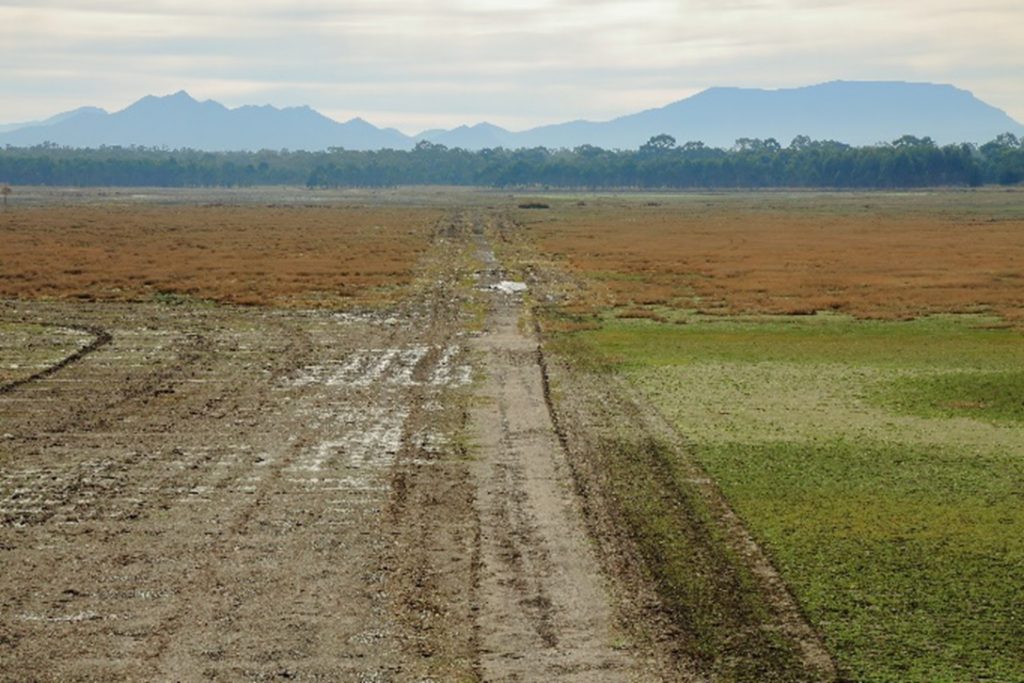
Looking north – central mound and drain between private (left) and public (right) portions of Walker Swamp removed and furrows (left) gone. Photo by Greg Kerr
The eight large tyres on the tractor used to tow the laser bucket effectively dispersed the weight of the tractor and laser bucket and travelled easily and with minimal impact across the wetland floor – leaving no apparent indents on the soils of the wetland. Importantly much of the native wetland vegetation present in the furrows was retained in situ, and after the first rainfall for the autumn / winter period in the area these plants have immediately started their normal winter growth and have quickly grown back into the wetland bed – shown below.
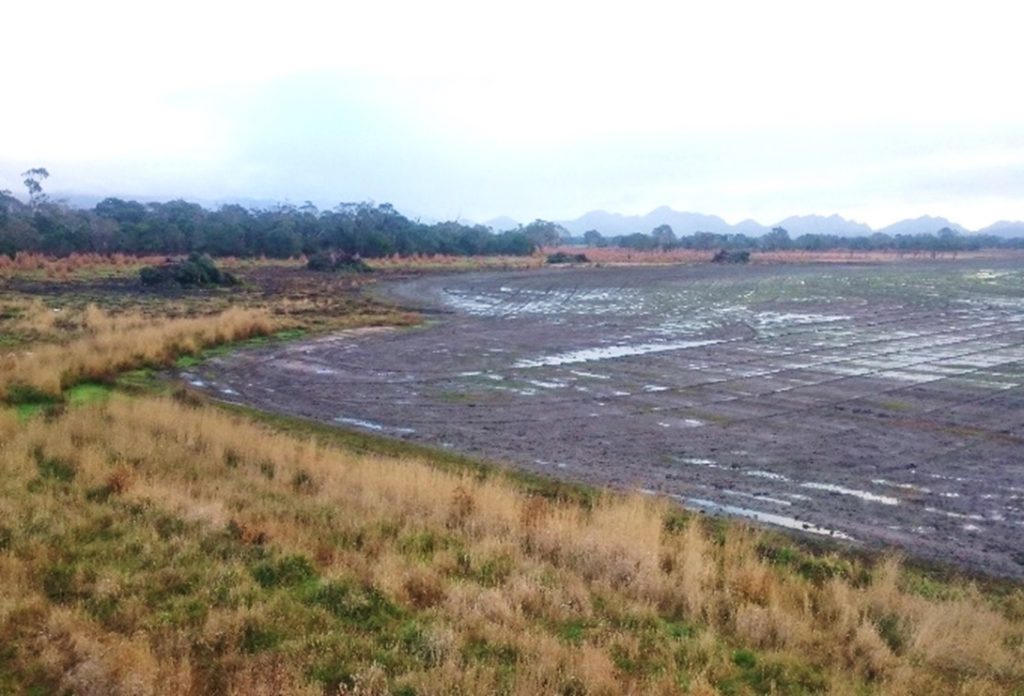
Recovering wetland bed and transformation begins with River Red Gum and Rough-barked Manna Gum now dominating the middle ground and the Serra Range of the Grampians behind. Note the stacks of removed Blue Gums in ground soon to be restored as wetland after the water depth is increased in 2019. Photo by Greg Kerr
It is expected that when the partially restored wetland fills (typically in late winter) the action of water movement and the continued growth of the native wetland plants will quickly remove the evidence of both the laser bucket activity and any residual mounding in the wetland bed.
Across other parts of the Stage 1 project area, it has been a challenge to deal effectively with the coppicing Blue Gum plantation where it had been harvested. In nearby properties, heavy machinery is being used to remove the coppice and stumps and begin the process of restoring former plantation areas to farmland. Such an approach is too costly to be considered at Walker Swamp. Through a Victorian Government Biodiversity On-ground Action (BOA) Grant we were able to spray the entire area of coppicing Blue Gum – as shown below.
The plan from here is to leave the stumps in situ and simply let mother nature begin the process of breaking them down in the soil over the next few years.
The remaining plantation areas in the Stage 1 project area contained little wood (well below economic levels in terms of tonnes per hectare), situated in small isolated patches that were dispersed across the site. Thanks again to BOA grant funding support, these trees have been pulled from the ground (stumps and all) and stacked for later burning, as shown below (and two images above). This method of removal means that there is no follow-up required to deal with further coppicing.
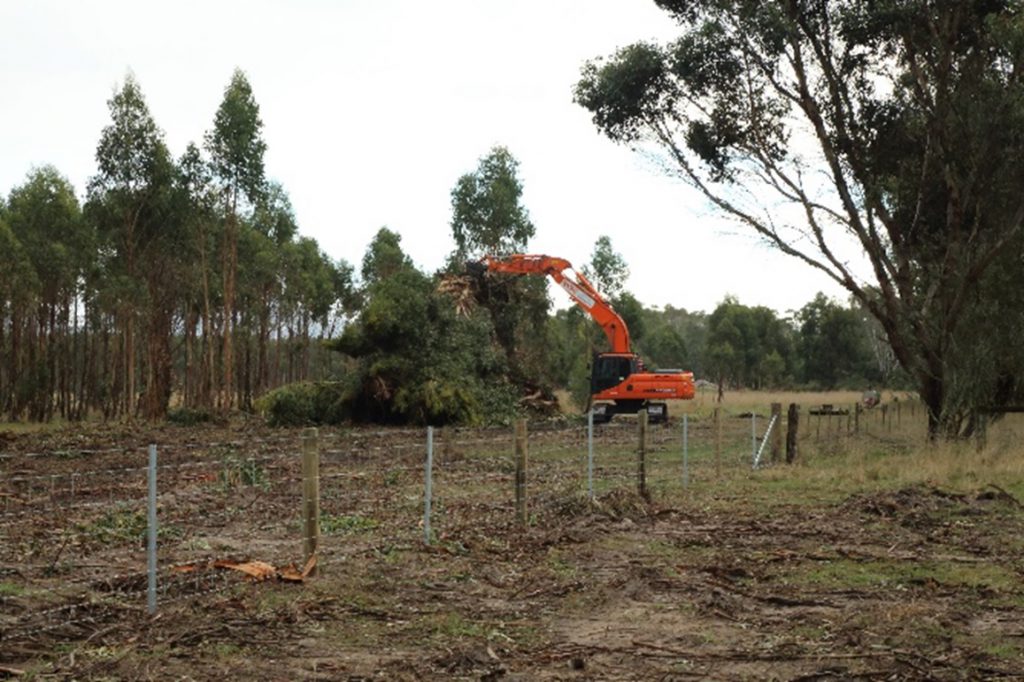
Uneconomic Blue Gums being removed by an excavator and piled for later burning off. Photo by Greg Kerr
The combined outcome of these works has seen a transformation of the Stage 1 Walker Swamp area. The new vista looking across Walker swamp is spectacular – as shown below. River Red Gum and Rough-barked Manna Gum now dominate the middle ground and with the Serra Range of the Grampians behind we can only wait for the wetland to fill (to its interim/trial restored level) and their reflections dotted with waterbirds and wetland vegetation to fill the foreground.

